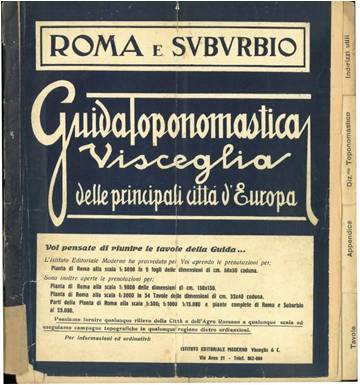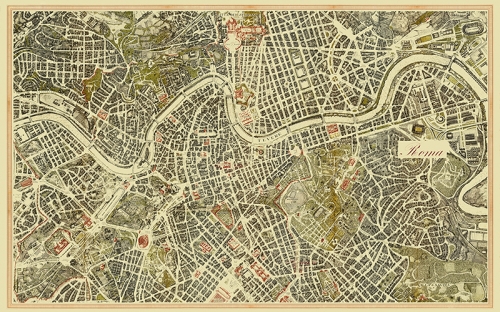Rome is divided toponymically into 22 districts, 35 neighbourhoods, 6 suburbs and 53 areas, for a total of 116 districts, i.e. parts of the territory which are relevant urbanistically and by population. This subdivision dates back to 6 March 1992 and is still in force.
The districts of Rome, identified by the letter R, constitute the first level of toponymic subdivision of Rome. The districts take inspiration from the Augustan regions, i.e. the areas into which the Roman territory was divided in antiquity.
During the Middle Ages, the territory was divided into 12 new parts and, at the end of the 13th century, their number rose to 13, with the addition of Trastevere. In 1586, at the height of the Renaissance, Pope Sixtus V added a fourteenth district in the San Pietro area, called Borgo.
When Rome was named the capital of Italy, it became necessary to create new urban centers that would welcome the population coming from the rest of the Peninsula. In 1874, the districts became 15 with the addition of the Esquiline.
In 1921, 7 new districts were established and each was assigned its own coat of arms. With the establishment of the last district, Prati, the neighborhoods were born.
The neighborhoods of Rome, identified by the letter Q, are 35 and surround the historic center, outside the Aurelian Walls.
The neighborhoods each have their own name and history. For example, the Garbatella district owes its name to "garbata", the cultivation system of the vineyards present on its hills. There is also a legend that a landlady who owned an inn lived here and had beautiful features and polite manners. The Gianicolense neighborhood, however, is commonly known as Monteverde, a name that derives from the yellow-green tuff that was extracted in ancient times from the hill on which the neighborhood was built.
Beyond the neighbourhoods, there are the suburbs, that is, those territories that unite the neighborhoods with the peripheral areas. Identified by the letter s, there are 6 suburbs in total and they have undergone various changes over the centuries.
Established in 1926, there were initially ten, then eleven, twelve, eleven again, seven and, finally, six. They had the same names as their respective neighborhoods - suburbio Tiburtino. And some neighborhoods have absorbed the suburbs, enlarging their boundaries. Other suburbs have been bulldozed and transformed into new neighborhoods.
Finally, we have 53 zones, i.e. the territories that make up the Agro Romano. Identified by the letter z, the zones represent the topographical classification of the Roman countryside, partly inhabited.
Until 1951, the Roman countryside was not the subject of any division. A first census attempt occurred in 1961, when 59 areas were established.
In 1992, a substantial reduction took place and the municipality of Fiumicino was established, obtained from 6 areas of the municipality of Rome: the areas of Isola Sacra, Fiumicino, Fregene, Maccarese Sud, Torrimpietra and Palidoro, as well as part of Maccarese Nord and a small part of Castel of Guido and Ponte Galeria.

Since its foundation, Visceglia has been interested in the toponymy of the city: among the first publications was "Toponymic guide to Rome" (1930).
Today, the historical cartographic archive has a series of maps with the administrative limits of the city of Rome, useful to all people and entities who want to know the inhabited territory in depth.
Discover our offer!

















Blog Ultimi Commenti